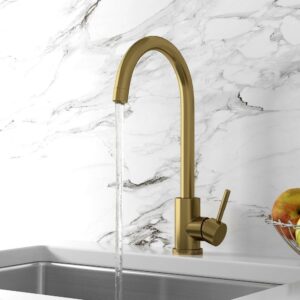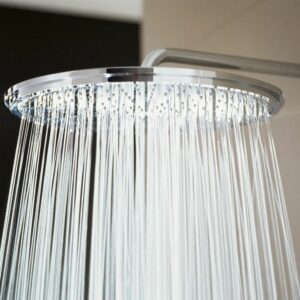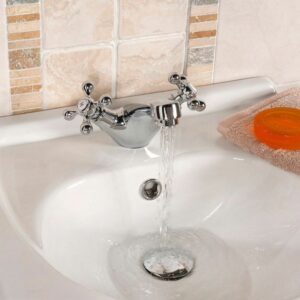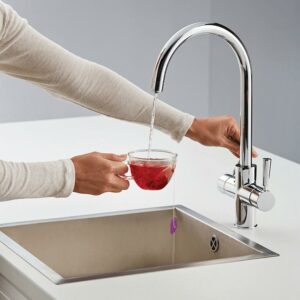Water pressure is a subtle feature of our domestic comfort. Or at least, we might not think about it until there’s a problem. Whether you’re taking a refreshing shower or doing the dishes in the kitchen sink, water pressure directly affects how well water flows through your bath taps and showerheads. For homeowners, understanding and managing water pressure ensures a steady, comfortable flow and can even help prevent damage to plumbing systems. In this comprehensive guide, you’ll learn everything you need to know about maintaining the smooth flow of water in your home.
What Is Water Pressure?
When you turn on a tap, the water that comes out is propelled by pressure. It’s the force that pushes water through pipes. Water pressure measurement is typically given in bars, with one bar being roughly the force required to push water to a height of 10 meters.
Understanding water pressure is crucial for ensuring an adequate water supply throughout your home.
There are different methods of supply and storage for domestic water, such as a gravity-fed system using a water tank or a combi boiler system that heats water on demand. Each system can impact the pressure you experience in your home.
How do I measure my water pressure?
Measuring your water pressure is not always intuitive, but any homeowner can do it with a few simple tools. All you need is a one-litre water jug, a stopwatch, and a basic understanding of mathematics.
To measure water pressure at home, follow these steps:
- Place the jug underneath a shower or a tap.
- Turn the tap or shower to full.
- In general, if the jug takes over 6 seconds to fill, your property has what is considered as low water pressure.
- To find the water flow rate, multiply the amount of water in the jug after six seconds by ten (for example, if the jug has 0.9 litres, 0.9 x 10 = 9 litres per minute).
- You have low pressure if the water flow rate is below 10 litres per minute. Between 10 and 15 is acceptable, and above 15 is good water pressure.
Understanding PSI – Your Home’s Water Pressure
PSI stands for pounds per square inch and is the standard unit for measuring water pressure. For most homes, a water pressure reading above 60 PSI is considered too high and may cause wear and tear on the plumbing. Low pressure, usually below 20 PSI, can lead to ineffective water flow and pressure issues. A normal reading falls between 40 and 60 PSI.
To measure your home’s water pressure in PSI, follow these simple steps:
- Purchase a water pressure gauge.
- Connect the gauge to an outside or an indoor tap with a threaded spout.
- Turn on the tap full blast and wait a few seconds for the reading to stabilize.
- The number on the gauge is your current PSI.
Optimal Water Pressure for Your Home
The water supplier’s responsibility ends at the point where your property’s pipework begins, and at this point, pressure can start to vary. A normal water pressure is usually synonymous with a pressure of 1 Bar. This is the pressure required to push water to the height of 10 meters or the average first-floor home height.
Achieving optimal pressure ensures water is available at the correct flow rate and can help conserve water by not having to wait for ages.
Discover how to save water in the bathroom with our detailed blog post for water-saving tips.
 How do I increase my water pressure at home?
How do I increase my water pressure at home?
Poor water pressure can be highly frustrating; sometimes, it feels like the water is barely coming out. But don’t worry—there are several ways to address this issue. If you have a combi boiler system, consider these steps:
- Ensure your stop tap is fully open. Sometimes, simple adjustments like this are all that’s needed.
- Check if your system is set to the statutory minimum level of 1 bar. Read your boiler’s manual for guidance on how to check and adjust this setting. Is your boiler in need of a service or an upgrade? Always consider advice from a professional.
- Consider installing a shower pump if you have a gravity-fed system. This more comprehensive solution can significantly boost water pressure throughout your home, especially in showers or taps far away from the water source.
How do I lower my water pressure at home?
While most of us are seeking ways to increase our water pressure, it might be necessary to lower it in some cases. Plumbers often recommend this to prevent damage to old or fragile plumbing systems. Specific reasons for needing to reduce your water pressure include protecting appliances and extending the life of your plumbing infrastructure.
To reduce your water pressure, consider the following methods:
- Install a Pressure Reducing Valve (PRV). This device limits the pressure of the water in your pipes and water appliances.
- Check for any blockages in your plumbing system that may be causing an accumulation of pressure and resolve these issues.
- Regularly inspect and maintain your plumbing. Leaks and blockages can lead to pressure build-ups that can unexpectedly burst pipes, leading to significant damage.
Conclusion
Water pressure might not be the most exciting topic, but it’s essential for maintaining your home’s comfort and health. From measuring your pressure with a simple gauge to adjusting it with various tools and techniques, taking control of your water pressure can make a world of difference in your everyday life. By understanding and mastering this aspect of home maintenance, you can ensure a consistently satisfying water flow for all your household needs. Whether you’re dealing with a trickle or a torrent, you now know to keep your water pressure where you want it.